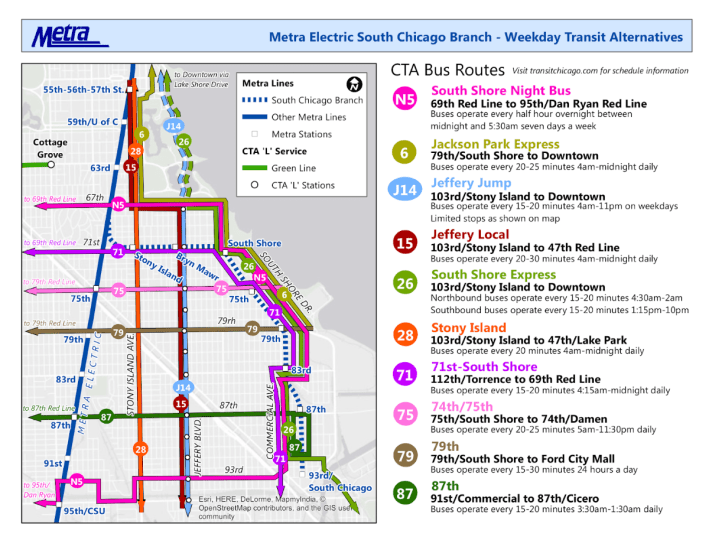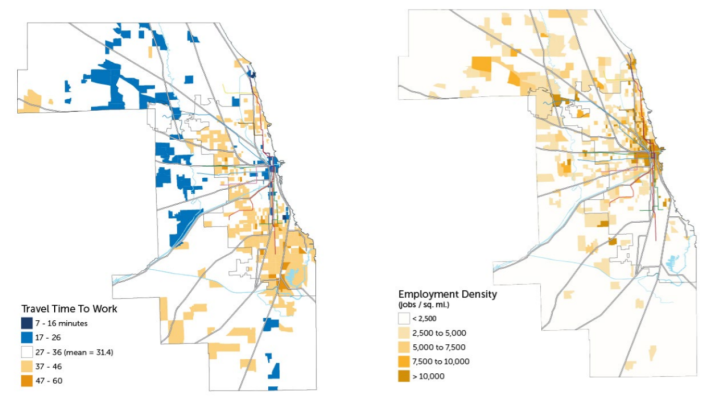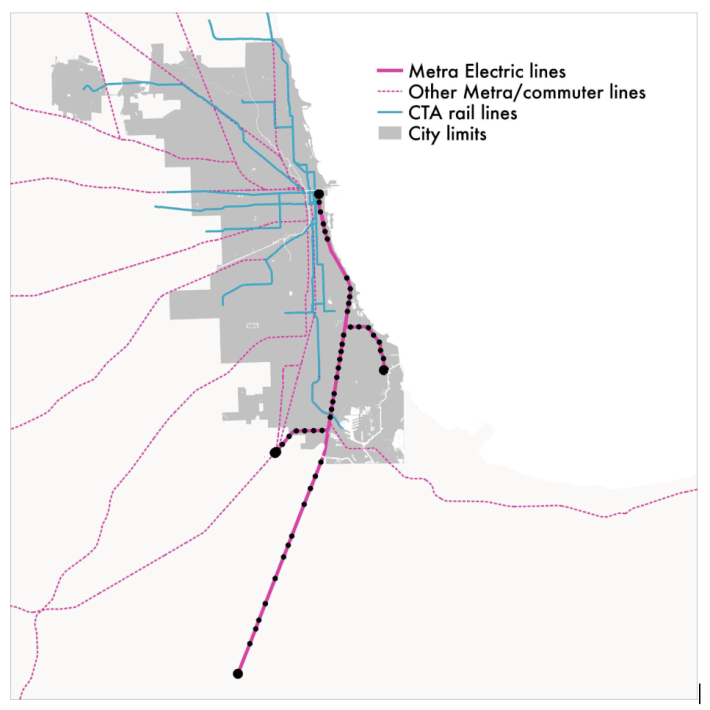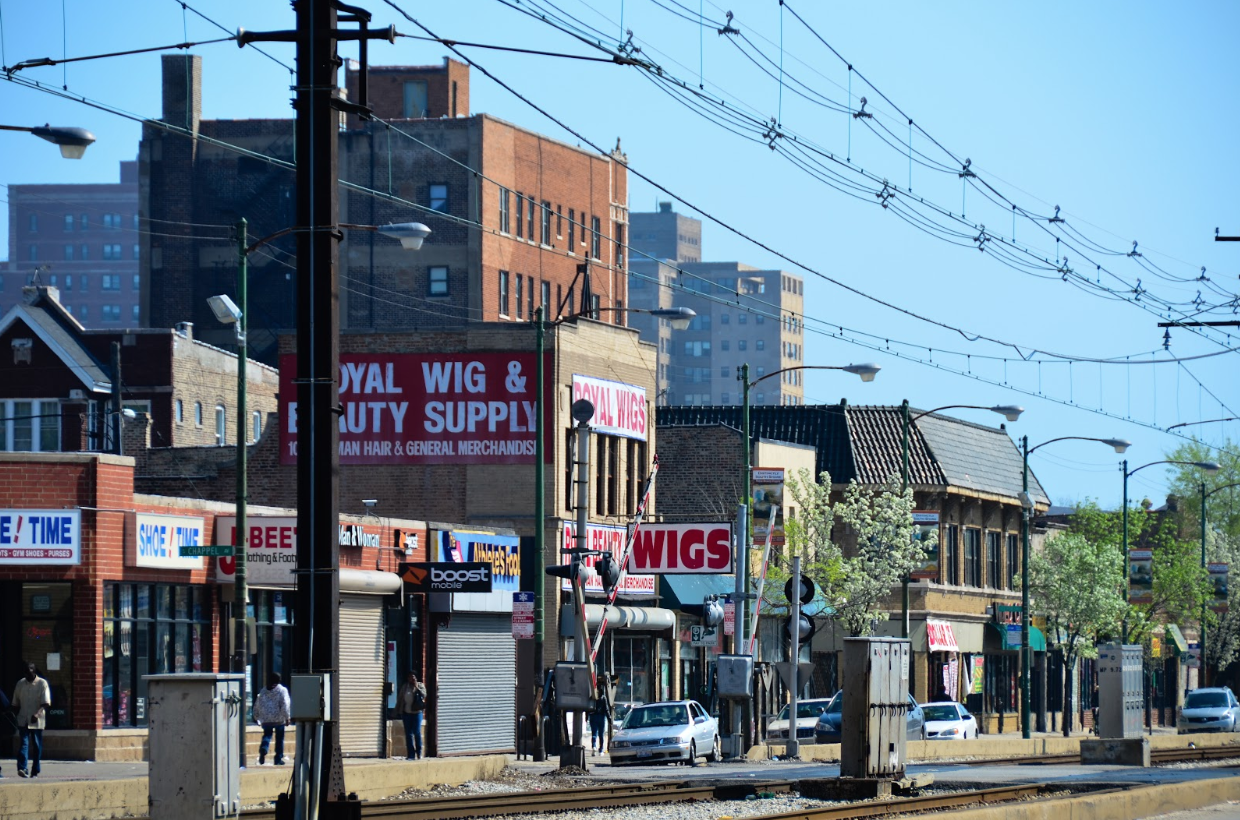I recently moved to the South Side from the Far North Side so that I would have a shorter commute to work in Hyde Park. I also regularly commute by bus and train to the North Side in order to take care of family members who still live there. My commute regularly takes an hour and a half, but can reach up to two hours due to road closures or traffic on Lake Shore Drive affecting South Side buses.
I have been tempted many times to take the Metra Electric instead of a bus so I could spend more time with my family and arrive to work on time. However, the price of a $4.25 fare plus the ‘L’ $2.50 fare would make my trip $6.75, which could have been spent on food or other necessities. In addition, Metra can be too infrequent to make reliable transfer with the CTA, so travel time sometimes is only slightly faster than if I took a bus. This leaves me making difficult choices in order to not hurt my bank account.
My story is not that much different from many other low-income Black residents on the South Side. Many of us cannot afford cars and have to commute by transit to reach many important destinations such as family, work, groceries, and medical appointments. We are left with mediocre transit options to reach our basic needs. So it wasn't surprising when a South Cook County Mobility Study found many transit dependent neighborhoods on the South Side are also those with the least access to transit.
Cook County’s plans to address this inequity in transit service by reducing the cost of Metra Electric and Rock Island ticket within the city to the price of an ‘L’ fare, allowing free transfers to CTA and Pace, and increasing reliability by running additional trains. The study discusses other cities that are converting their commuter rail lines to serve “transit deserts” in predominantly low-income communities of color, such as the Fairmount Line in Boston and the LIRR in New York City. This proposal is packaged as a part of a larger plan to address racial and economic equity in the county.
Unfortunately, Chicago’s Mayor Lori Lightfoot and Chicago Transit Authority president Dorval Carter Jr. are opposed to the proposal, which goes against the recommendation in the mayor’s transition report, which state the mayor's intention to “enhance Metra service to Chicago, focusing on transit-underserved neighborhoods."

Without much context, a “dramatic effect” on CTA ridership seems concerning. However, the mobility study has shown under the proposal that CTA rail lines would lose 7,900 daily riders, which is only about a 1 percent decline in daily ridership. Most of the loss would be from CTA bus routes, where a loss of 23,400 riders results in a 3 percent decline in ridership. Just as important, Metra’s ridership would increase by 84,400 people, with a net system increase in ridership of 48,300 people. This means more residents in southern Cook County would be using transit to reach their destinations, which should be the purpose for public transit agencies.
Although the CTA would lose ridership, rail lines are not projected to be as affected compared to bus routes. This is most likely because CTA ‘L’ lines share few adjacent stops with the Metra Electric District and Rock Island District stations, and are less likely to compete for ridership. This then suggests that most of the CTA ridership loss would be on routes that run parallel and compete with these Metra lines.
While the CTA would lose ridership on bus routes that compete with Metra, the most important question to ask is “Why is the CTA is running several bus lines that compete with Metra lines?” Many sections of CTA routes #2, #6, #26, #71, #115, and #N5 run adjacent to many sections of the Metra Electric line and parts the #112 run parallel to the Rock Island line. This service redundancy is partly because the CTA and Metra are rival transit agencies that do not share revenue and compete for ridership. This conflict results in worse service for South Siders.
Much of the South Side has a longer commute time to work and a lower employment density than any other part of the city. This is in spite of having a “relatively good transit access, comprised of several Metra and CTA rail lines, as well as robust CTA and Pace bus service,” according to the report. Longer commutes have been shown to adversely effect people's quality of life and health. The current transit system punishes South Siders and needs to change to help residents.

Since Chicago has been slow to implement bus rapid transit, which has the potential to help low-income communities of color, the city needs to look at new ways to help improve transit in these neighborhoods. An example of planned rapid rail transit that will potentially improve job access and transit mobility is the CTA Red Line Extension to the Far South Side, which is not expected to be completed until 2026, assuming funding can be lined up. The extension will provide only four new ‘L’ stops, while much of the Far South Side would still lack fast and affordable transit service. However, under Cook County’s proposal, the Metra Electric and Rock Island branches would perfectly compliment the new Red Line service.
Upgraded Metra lines could also help bring economic opportunity to local businesses on the South Side. As Sandy Johnston highlighted in the South Side Weekly, predominantly Black residents “living in lower-income South Side neighborhoods are less likely to hold white-collar nine-to-five jobs in the Loop, and more likely to need transit for non-commute daily tasks." The Metra Electric and RI lines provide service to adjacent neighborhoods, and new businesses could open up to help South Side residents get to daily needs without having to travel far from their communities. This makes sense given that the South Side has historically developed along these rail lines, and the Metra Electric line previously had service similar to the CTA. From South Shore to Roseland to Auburn Gresham, these lines served as backbones for the neighborhood the same way the Red and Blue Lines have for the North and Northwest Side.

There are compromises the CTA could make with Metra that do not involve blocking Cook County’s proposal of equitable fares and service. The South Cook County Study expects a net revenue of $11.9 million, and calls for revenue sharing between agencies to offset any profit losses to the CTA or Pace. The CTA could also save money by reducing redundancy with Metra on competing bus routes. While the South Chicago branch of the MED is ADA accessible, bus routes that parallel other, non-accessible Metra branches must be maintained in order to continue providing equitable service to people with disabilities. This should push Metra to continue making stations on other branches accessible to all people.
Mayor Lightfoot and President Carter are well aware that the South Side has continued to face disinvestment due to racism and economic discrimination. Blocking affordable and reliable Metra upgrades might save the CTA some ridership, but it would only make travel harder for those who have to go outside of their neighborhood for school, for a doctor’s appointment, to buy groceries for their family, and to work at their second job. The South Side deserves fair transit and mobility across the city as much as everyone else. Fighting between transit agencies will continue to hurt Black and low-income South Siders the most.






